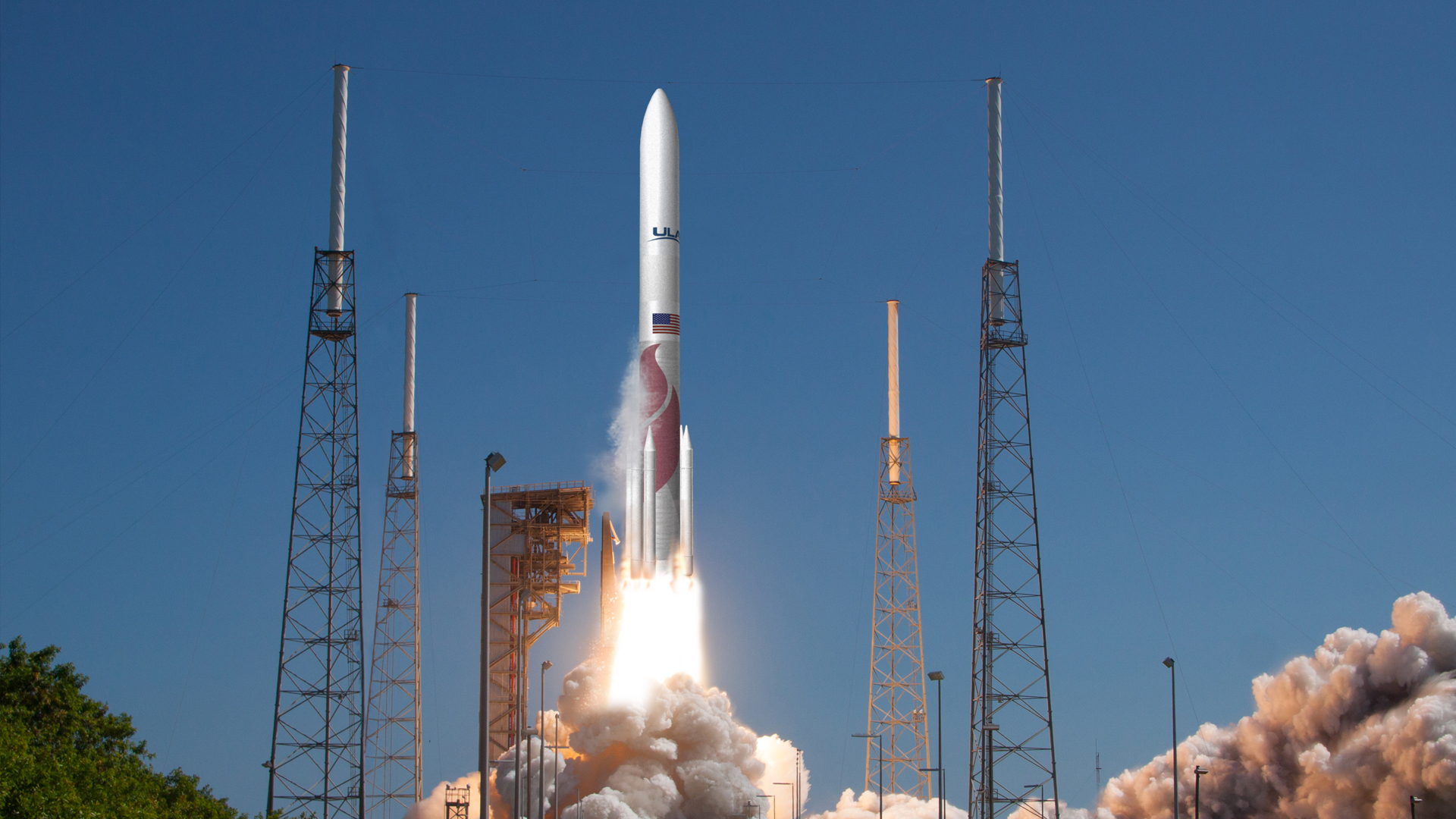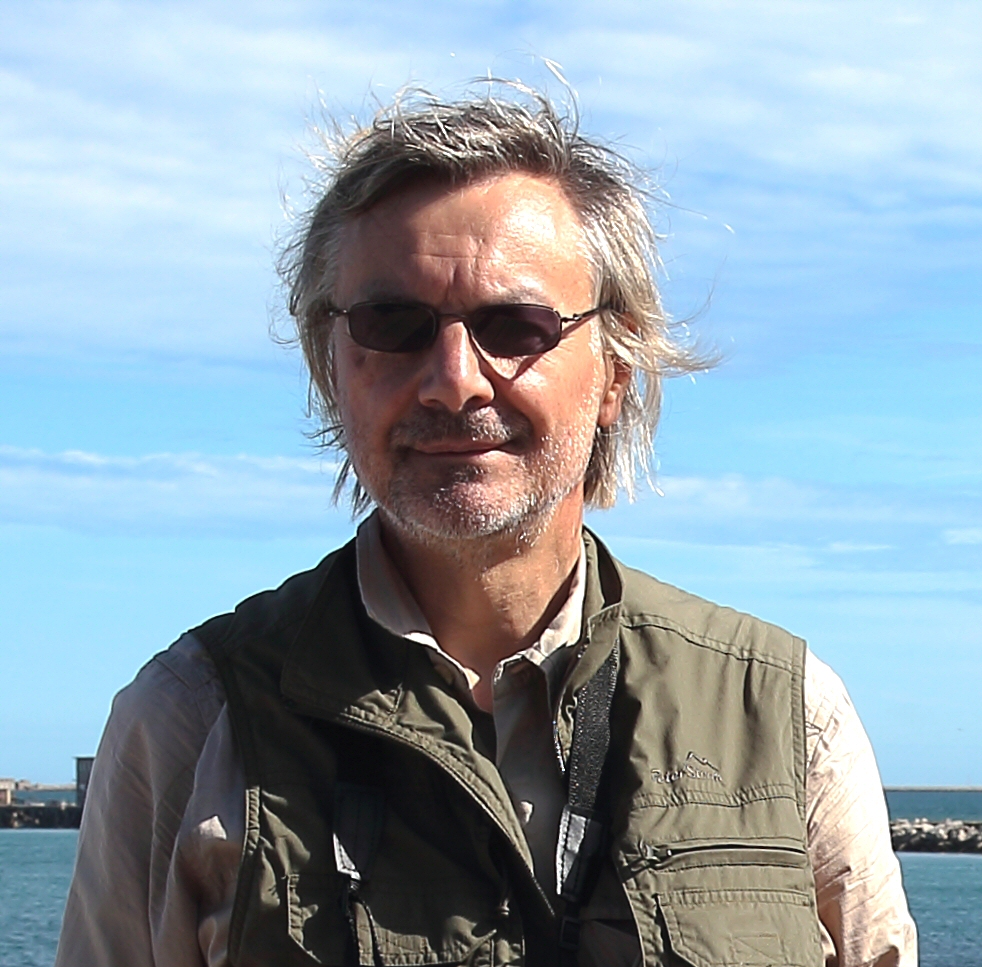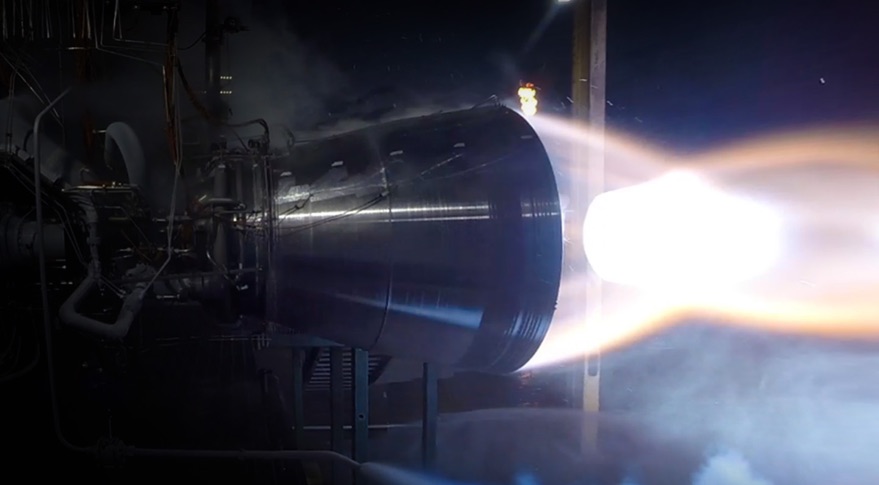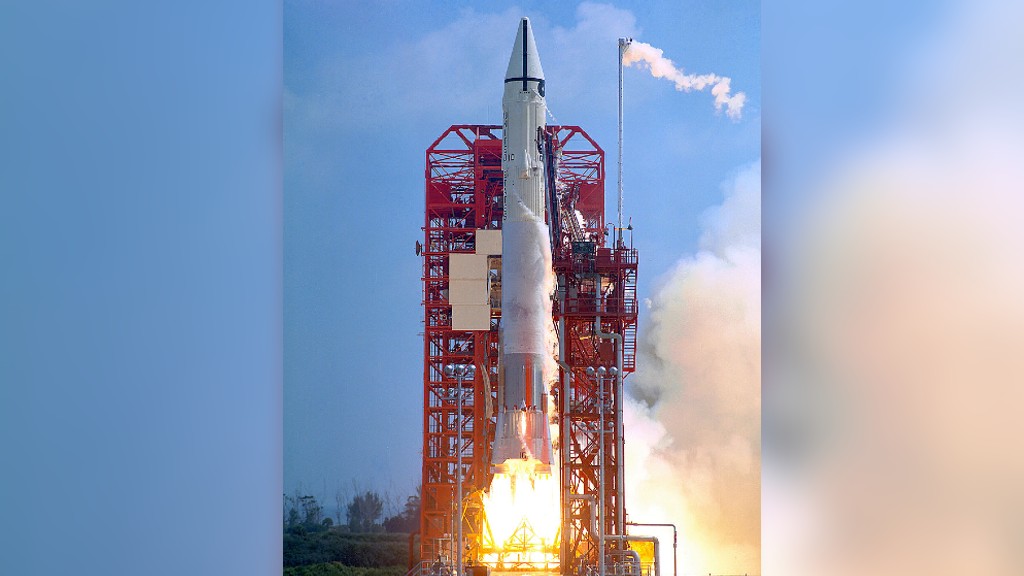Vulcan Centaur rocket: The space workhorse of tomorrow
United Launch Alliance's new space launch system incorporates innovative technology and will enable more cost-effective missions.

The Vulcan Centaur is a new methane-fueled rocket from United Launch Alliance (ULA), one of the U.S.' most experienced space launch operators.
Due to launch in late 2023, the Vulcan Centaur rocket will replace ULA's well-established workhorses, the Atlas V and the Delta IV, in launching payloads to space.
As with its predecessors, this rocket will launch satellites into a variety of orbits, including geosynchronous ones or missions to the moon, for NASA and other U.S. government customers. However, ULA says the new rocket will be able to fly more cheaply than the company's older rockets, thanks to an initiative called SMART, which stands for "sensible, modular, autonomous return technology." This program allows the most expensive parts of the rocket to be recovered after launch and refurbished for reuse.
Parts of the new design use well-established technology, such as the Centaur upper stage and the solid rocket boosters used on the Delta IV. More innovative is the main Vulcan core stage, which will employ a completely different type of rocket engine than previous ULA launchers: the BE-4 engine, designed and manufactured by Blue Origin, the spaceflight company started by Amazon founder Jeff Bezos. The BE-4 will also be used for Blue Origin's New Glenn orbital rocket when it is ready.
Vulcan Centaur statistics
Height: 202 feet (61.6 m)
Diameter: 18 feet (5.4 m)
Mass: 1.2 million pounds (546,700 kg)
Solid rockets: 2, 4 or 6 depending on the configuration
Orbits: Geosynchronous, geosynchronous transfer, low Earth orbit, medium Earth orbit, translunar injection to the moon
Propulsion:
- Lower stage: Two Blue Origin BE-4 engines. Fuel: liquefied natural gas and liquid oxygen
- Up to 6 Northrop Grumman solid rocket boosters. Fuel: graphite-epoxy composite
- Centaur second stage with Aerojet Rocketdyne's RL10 engines. Fuel: liquid hydrogen/liquid oxygen
Blue Origin BE-4
ULA elected to go with the U.S.-made BE-4 to remove reliance on a Russian-made engine, the RD-180, that was a key part of the Atlas V configuration. In 2014, geopolitical relations between the United States and Russia soured when Russia invaded Crimean Ukraine, and things worsened when Russia made a second unsanctioned invasion of other regions of Ukraine starting in February 2022. Aside from the International Space Station, most international space partnerships with Russia have been torn asunder in the wake of the second invasion, so the supply chain pivot will eventually benefit ULA.
Breaking space news, the latest updates on rocket launches, skywatching events and more!
However, the BE-4 engine has proved to be one of the main stumbling blocks on Vulcan Centaur's journey to flight readiness, which was originally expected in 2020. The BE-4 is a hugely ambitious piece of engineering, but that's just one reason for the delays. Ars Technica, reporting from anonymous sources, has also pointed to problems accruing from a shortage of available hardware, necessary design changes and shutdowns in the early stages of the COVID-19 pandemic.
More powerful than the space shuttle's main engines, the BE-4 is designed to be fueled by methane, which is new in the context of space launch systems. Several companies — including SpaceX, Blue Origin and China's Landspace — are developing launchers around it, but no methane-fueled rocket has made it to space, according to NASASpaceflight.com.
Who will use the Vulcan Centaur?
NASA will be one of Vulcan Centaur's biggest users, but the U.S. Space Force (USSF) will be another important customer.
Prompted by the recognition that space, particularly surveillance and communication systems, has become indispensable to modern military operations, the role of the USSF is to protect U.S. interests in the space domain.
Military space launches, previously the province of the U.S. Air Force, now fall within the USSF. For example, in July 2022, a ULA Atlas V rocket launched a pair of spacecraft — a missile-tracking satellite and a technology demonstrator platform — on behalf of the USSF.
ULA is not the only launcher for the USSF, however. SpaceX's Falcon 9 rocket is also a popular choice, as it has affordable self-landing technology and launches frequently and reliably. SpaceX's newer Falcon Heavy has also been used for national security launches requiring more mass lifted to Earth orbit.
Centaur upper stage
Unlike the methane-fueled, partially reusable Vulcan booster, there's nothing revolutionary about Vulcan Centaur's upper stage. In its basic design, Centaur is one of the U.S.' oldest and most successful pieces of space hardware.
Originally conceived at the dawn of the Space Age in the late 1950s, Centaur's first successful flight, atop an Atlas booster, took place on Nov. 27, 1963. Since then, Centaur has flown over 260 times, sending one spacecraft after another on its way into the history books — from the United States' first lunar soft lander, Surveyor 1, in 1966 to the Curiosity and Perseverance Mars rovers of today.
Vulcan Centaur FAQ

Mark Peller is the vice president of Vulcan development at United Launch Alliance (ULA). Peller is responsible for the development of Vulcan, the launch vehicle development and its supply chain, along with ULA's production and launch operations to meet the program's objectives. He previously worked at Rockwell International and The Boeing Company (after it acquired the aerospace and defense businesses of Rockwell). He started working on the Delta rocket program in 1997 and continued working in that line of rockets after ULA was formed in 2006 as a joint venture between Boeing and Lockheed Martin.
What makes Vulcan Centaur distinct from other rockets of its class?
Versatility and overall capability. By versatility, I mean being able, with a single family of rockets, to cover a wide range of missions. Vulcan can do everything from medium lift all the way up to very heavy lift, all with the same family of rockets. Then it has a very capable high-energy upper stage with the latest variant of Centaur. That is well suited to very-high-energy missions, like injection to geostationary orbit or interplanetary missions.
What sorts of missions is Vulcan Centaur optimized for?
We serve commercial, civil and national security customers, and to be honest, they all have a wide variety of missions that we must support. There's overlap between all three of those. This comes back to versatility for the rocket. Vulcan uses a core booster, fueled by liquefied natural gas. We can supplement propulsion on the booster with adding pairs of solid rocket motors. We can fly two, four or six to supplement the thrust of the vehicle and really optimize performance for a particular mission. So it is a very personal vehicle supporting anywhere from the low Earth orbit missions, which all three of those markets I talked about have high demand for, to a medium Earth orbit where there's a lot of navigation constellations, to transfer to geostationary orbit or interplanetary.
What lessons learned have you put into the Vulcan Centaur design?
It leverages all of the learning from operating Atlas and Delta over the years, and rolls in the latest state-of-the-art technology in that configuration to achieve a very-high-performing, flexible configuration. For example, Centaur, the upper stage, builds upon decades of experience with high-energy upper stages. It is very capable and highly efficient in terms of light structure. It is also very volumetrically efficient, meaning we make sure that we pack as much propellant on board as we can to achieve that level of high performance. We're really proud of Centaur and continuing that tradition of extremely efficient, extremely high-performance upper stages to enable us to support a wide range of missions.
Additional resources
To keep track of the Vulcan Centaur launch progress, you can visit ULA's Vulcan Countdown page. Additionally, to learn more about the rocket's statistics, see this Vulcan Centaur design illustration.
Bibliography
Beil, A. & Burghardt, T. (2022, March 13). Methalox race likely to be won in 2022, but winner not yet clear. NASASpaceflight.com. https://www.nasaspaceflight.com/2022/03/methalox-race-to-orbit/
Berger, E. (2021, August 5). Blue Origin’s powerful BE-4 engine is more than four years late—here’s why. Ars Technica. https://arstechnica.com/science/2021/08/blue-origins-powerful-be-4-engine-is-more-than-four-years-late-heres-why/
Dunbar, B. (2012, December 12). Centaur: America's workhorse in space. NASA. https://www.nasa.gov/centers/glenn/about/history/centaur.html
Kanayama, L. (2022, May 9). As Centaur turns 60 years old, ULA prepares to evolve Centaur V. NASASpaceflight.com. https://www.nasaspaceflight.com/2022/05/centaur-turns-60/
United Launch Alliance. (n.d.). Vulcan: America's Rocket. Retrieved February 14, 2023, from https://www.ulalaunch.com/rockets/vulcan-centaur
United States Space Force. (n.d.). United States Space Force history. Retrieved February 14, 2023, from https://www.spaceforce.mil/About-Us/About-Space-Force/History/

Andrew May holds a Ph.D. in astrophysics from Manchester University, U.K. For 30 years, he worked in the academic, government and private sectors, before becoming a science writer where he has written for Fortean Times, How It Works, All About Space, BBC Science Focus, among others. He has also written a selection of books including Cosmic Impact and Astrobiology: The Search for Life Elsewhere in the Universe, published by Icon Books.
- Elizabeth HowellContributing Writer



